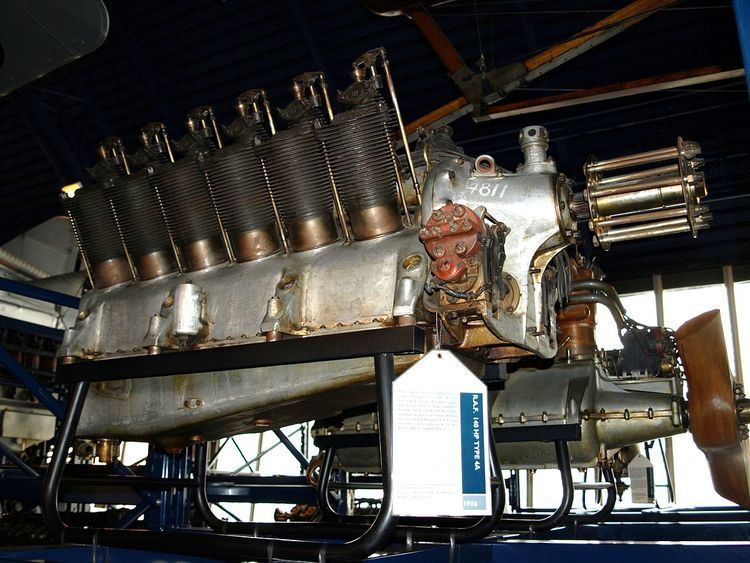The RAF 4 was a British air-cooled, V12 engine developed for aircraft use during World War I. Based on the eight–cylinder RAF 1 it was designed by the Royal Aircraft Factory but produced by the two British companies of Daimler and Siddeley-Deasy. The RAF 5 was a pusher version of the same engine.
In April 1918 a turbocharged experimental version of the RAF 4d was developed using a Rateau turbocharger, the engine being flown in the R.E.8 B738.
RAF 41914 - Prototype engine, 140
horsepower (104 kW).
RAF 4a1917 - Main production variant, 150 horsepower (112 kW). 3,608 built.
RAF 4d1916 - 180 horsepower (134 kW), experimental
supercharger installation. 16 built.
RAF 4e1917 - 240 horsepower (180 kW), strengthened cylinders and enlarged valves.
RAF 51915 - 150 horsepower (112 kW), pusher version with fan-cooling.
RAF 5b170 horsepower (127 kW), increased
bore version of RAF 5.
Armstrong Whitworth F.K.8Bristol F.2 FighterRoyal Aircraft Factory B.E.12Royal Aircraft Factory R.E.7Royal Aircraft Factory R.E.8Siddeley-Deasy R.T.1Vickers F.B.14Royal Aircraft Factory F.E.2Royal Aircraft Factory F.E.4A preserved RAF 4a engine is on public display at the Science Museum (London).
Data from Lumsden
Type: 12-cylinder, upright, 60-degree Vee engineBore: 3.94 in (100 mm)Stroke: 5.51 in (140 mm)Displacement: 806.15 cu in (13.2 L)Dry weight: 680 lb (308 kg)Valvetrain: EOI (side-valve inlet, exhaust overhead)Fuel system: Twin Claudel-Hobson Mk.1A carburettorsCooling system: Air-cooledReduction gear: 0.5:1, Left-hand tractorPower output: 163 hp (122 kW) at 1,800 rpm (takeoff power)Specific power: 0.2 hp/cu in (9.2 kW/L)Compression ratio: 4.3:1Power-to-weight ratio: 0.24 hp/lb (0.4 kW/kg)
